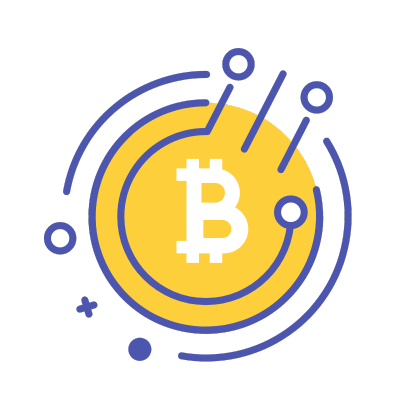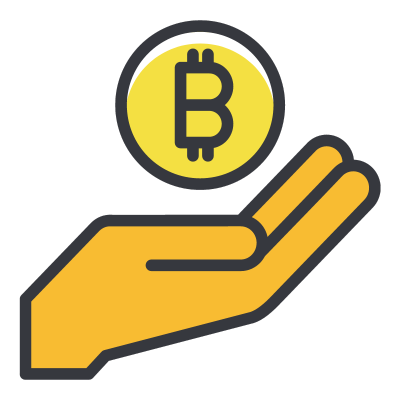Handling forks in blockchain networks is one of the more intricate challenges crypto exchanges face today. Forks often disrupt user experience and raise significant operational hurdles for exchanges, which must respond quickly and adaptively to maintain the security, trust, and smooth functioning of their platforms.
Forks can affect market prices, user assets, and transaction speeds, making it essential for exchanges to handle them efficiently. This article will explore the intricacies of handling forks on crypto exchange platforms, breaking down the types of forks, how they impact crypto exchanges, and best practices for effective fork management.
1. Understanding Blockchain Forks

Blockchain forks occur when a blockchain diverges into two separate paths, either temporarily or permanently. Forks happen due to:
- Protocol updates
- Community disagreements on a cryptocurrency’s governance
- Security issues or bugs that require immediate resolution
There are two primary types of forks:
- Soft Fork
- Backward compatible
- Allows updated nodes to interact with older ones
- Primarily used for security upgrades or minor protocol changes
- Hard Fork
- Non-backward compatible
- Requires all nodes to upgrade to the new protocol
- Can result in a new currency (e.g., Bitcoin Cash from Bitcoin)
Example: In August 2017, Bitcoin experienced a hard fork due to disagreements within its community over scalability, leading to the creation of Bitcoin Cash. Bitcoin Cash supporters advocated for larger block sizes to increase transaction speeds, a stark contrast to Bitcoin’s smaller blocks designed to prioritize decentralization and security.
2. Types of Forks and Their Implications on Crypto ExchangesKey Impacts of Forks on Exchanges:
- Asset Duplication: Hard forks often create duplicate tokens, meaning exchanges must decide whether to support the new asset or not.
- Market Volatility: Forks can drive significant price fluctuations, impacting trading volumes and liquidity.
- Increased Security Risks: During forks, replay attacks (using the same transaction on two chains) may occur, especially in contentious forks without replay protection.
- User Confusion: Users often struggle to understand the new assets and their values, which can affect confidence in the platform.
Fork Type | Characteristics | Examples | Impact on Exchanges |
Soft Fork | Backward compatible; minor protocol changes | SegWit (Bitcoin) | Low disruption; minor adjustments in protocols |
Planned Hard Fork | Pre-scheduled, community-approved | Ethereum 2.0 | Predictable; allows for preparation and asset support policies |
Controversial Hard Fork | Disagreement-driven, leads to new currency | Bitcoin Cash | High risk; potential for price volatility and user confusion |
Unplanned/ Emergency Fork | Urgent, security-driven change | DAO hack (Ethereum Classic) | Very high disruption; requires rapid response, risk management |
Build Your Secure Crypto Exchange Today!

3. Steps for Crypto Exchanges to Manage Forks
Handling forks successfully requires a structured approach involving communication, security, technical adjustments, and user education. Here’s a step-by-step guide:
A. Preparation Phase
- Monitoring Blockchain Networks: Track potential forks across all supported cryptocurrencies and conduct impact assessments.
- Tools: Use services like ForkMonitor.info or Coin Dance to receive updates on impending forks.
- Internal Team Briefing: Train and inform your technical team about the possible outcomes and operational impacts.
- User Communication Plan: Notify users early via emails, website banners, and social media about the potential fork and its implications.
B. Technical Adjustments
- Node Synchronization: Ensure that all nodes are updated according to the fork requirements, especially for hard forks.
- Example: Ethereum’s upgrade from ETH 1.0 to 2.0 required exchanges to run new nodes for staking, with updates for Proof-of-Stake support.
- Temporary Withdrawal Suspension: To protect assets and prevent potential replay attacks, temporarily halt deposits and withdrawals during the fork.
- Replay Protection Implementation: For hard forks, ensure replay protection is in place to prevent double spending on both chains.
C. Security Enhancements
- Adjust Security Protocols: Implement additional security checks, especially for critical forks.
- Example: During the Ethereum DAO fork, exchanges adjusted security protocols to manage two different blockchains – Ethereum (ETH) and Ethereum Classic (ETC).
- Asset Protection: If a fork is contentious, consider creating mirrored assets to preserve user holdings on both chains.
D. User Communication and Education
- Timely Updates: Inform users on the status of the fork, possible impacts on their holdings, and any actions they should take.
- Critical Points: Notify users about when they can resume deposits, withdrawals, and trading.
- Educational Resources: Provide FAQs, guides, and customer support on fork-related questions to help users understand the new assets.
E. Post-Fork Review and Follow-Up
- Check Blockchain Stability: After the fork, monitor the stability of both chains before fully resuming normal operations.
- Audit and Adjust: Review operational adjustments, finalize security protocols, and resolve any remaining discrepancies.
- Ongoing Support: Continue supporting forked assets if necessary, or delist after a public notice period if the asset becomes obsolete.
4. Risk Management for Handling Forks
Proper risk management minimizes potential losses and ensures operational continuity. Here are some risk management strategies:
- Asset Insurance: Some exchanges use insurance for high-value assets during contentious forks to protect user funds.
- Replay Attack Prevention: Implement replay protection by default during hard forks.
- Legal Compliance: Assess regulatory implications of supporting new tokens after a fork, as newly forked coins may introduce new legal considerations.
- User Funds Allocation: Decide whether to allocate the new coins to users, as done by Coinbase during the 2017 Bitcoin Cash fork, where all Bitcoin holders received an equivalent amount of Bitcoin Cash.
Start Your Centralized Exchange Today!

5. Case Studies of Crypto Exchanges Handling Forks
Case Study 1: Ethereum Hard Fork Post-DAO Hack
- Background: In 2016, after the DAO hack, Ethereum’s community initiated a hard fork to reverse the hack.
- Exchange Response: Major exchanges, including Binance and Coinbase, temporarily suspended transactions and offered dual support for Ethereum and Ethereum Classic.
- User Impact: Many users were confused about the new “ETC” asset, resulting in a need for extensive user education.
Case Study 2: Bitcoin Cash Hard Fork (2017)
- Background: Bitcoin Cash forked from Bitcoin due to scalability disputes.
- Exchange Response: Exchanges like Kraken and Bitfinex provided support for both BTC and BCH, while others, like Coinbase, initially refused but later allowed users access to Bitcoin Cash.
- Market Impact: Bitcoin Cash saw high volatility, making it challenging for exchanges to manage liquidity without significant price slippage.
6. Best Practices for Managing Blockchain Forks on Exchanges
To manage forks effectively, crypto exchanges should:
- Monitor Fork Alerts: Stay updated on blockchain community discussions and upcoming forks.
- Develop Pre-Fork Protocols: Create standard operating procedures (SOPs) for different fork scenarios.
- Maintain Transparent Communication: Ensure users are informed about all changes.
- Implement Security Measures: Prioritize replay protection, enforce asset safety protocols, and test for vulnerabilities.
- Prepare for Asset Management Decisions: Decide whether to list new assets or continue supporting both forks, balancing user demand and regulatory considerations.
- Utilize Reputable Custodians: Custody solutions can assist in managing forked assets securely, which is particularly relevant for hard forks with controversial splits.
Conclusion
Handling forks in blockchain networks demands a structured, secure, and transparent approach. Crypto exchanges must prioritize user security, asset integrity, and proactive communication to mitigate the disruptions forks may cause. By adopting comprehensive risk management strategies and preparing for various fork scenarios, exchanges can build trust and ensure a smooth user experience during these transitions.















